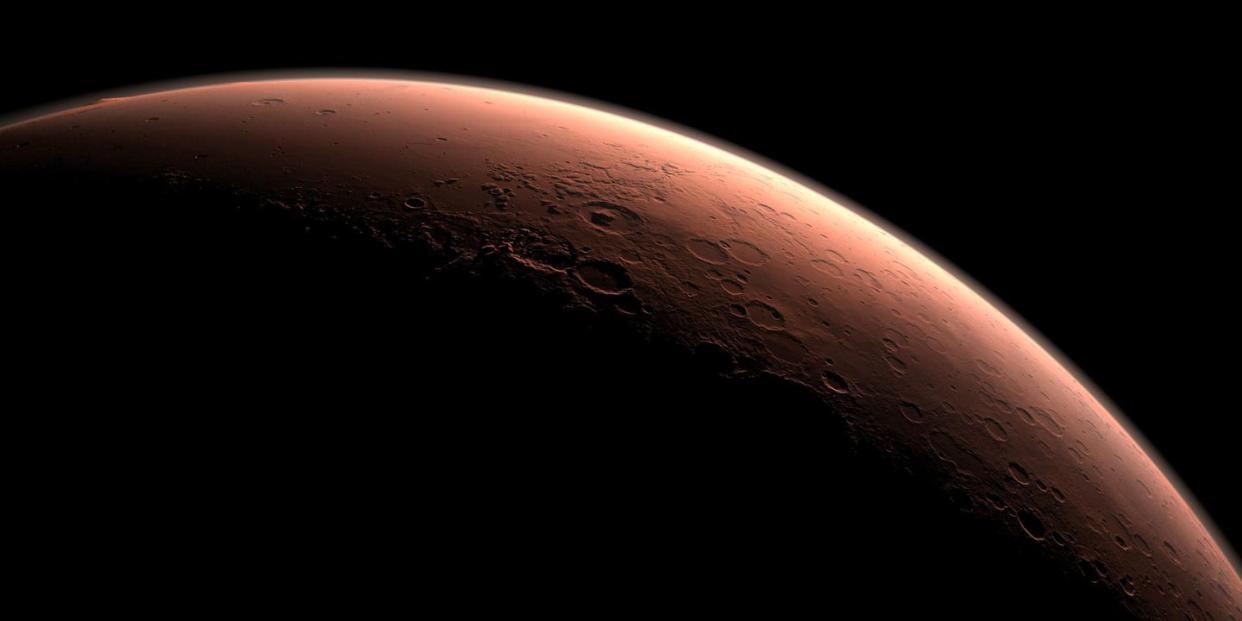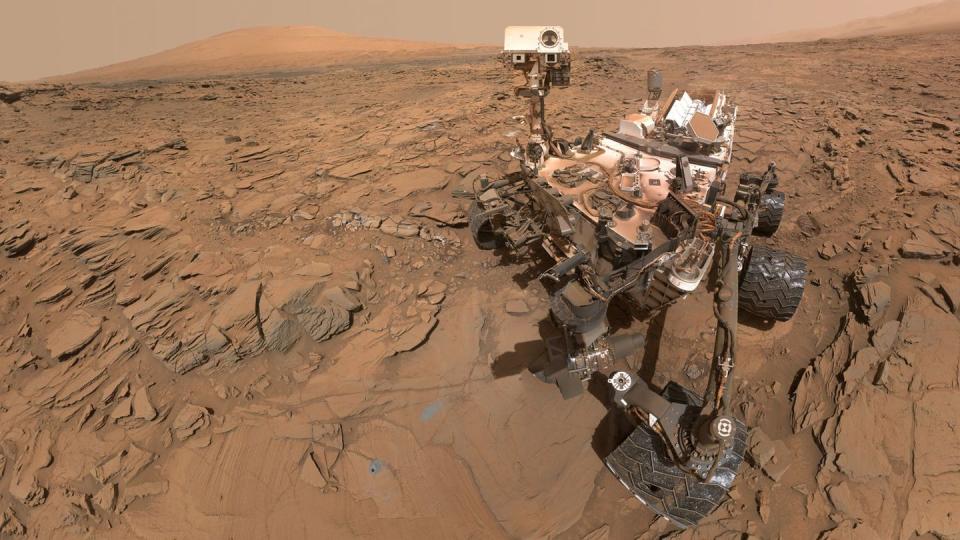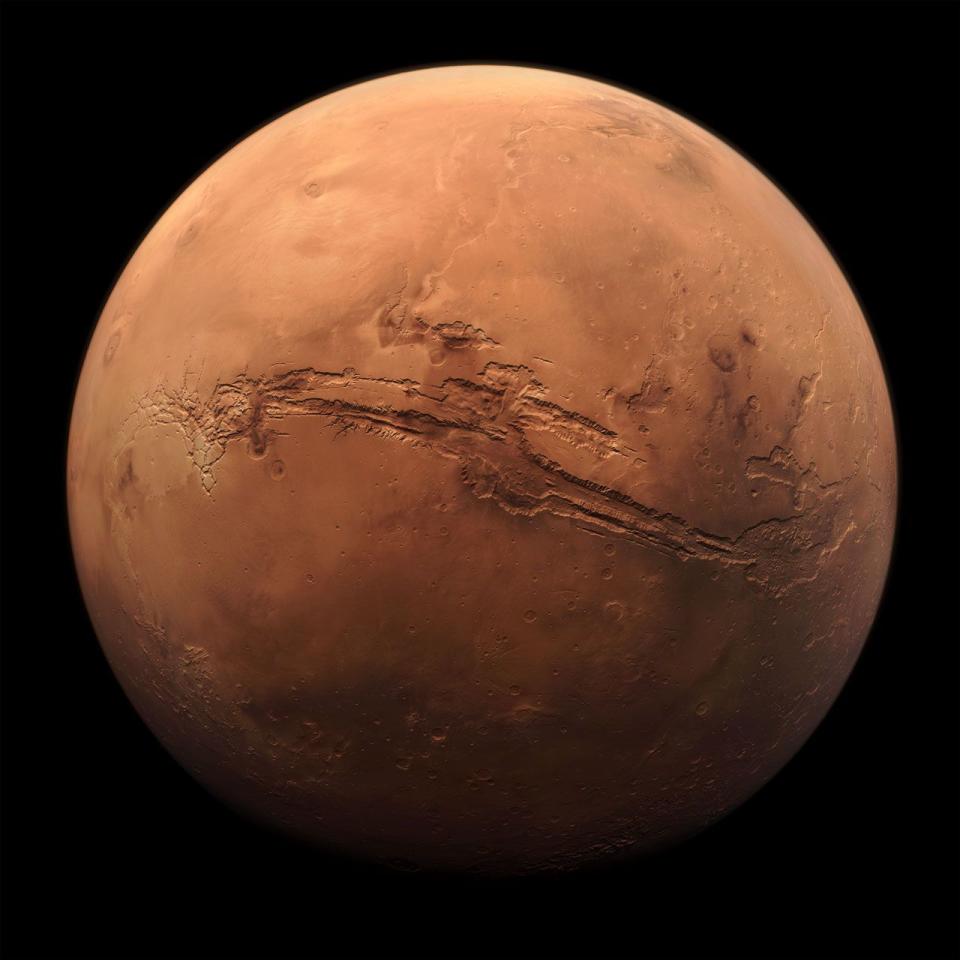We Now Have a Good Idea When Martian Oceans Started Dying

Perhaps you've heard it many times already — there's water on Mars. Or there was, long ago, and now it's found in isolated pockets. The past 20+ years of Mars missions from NASA, ESA, and other space agencies have pointed to a world that was once warm and wet, and is now cold and dry.
Now that we know Mars once had water, though, we're unlocking deeper questions like "when" and "for how long." A new discovery reported today in Nature Geoscience gives a glimpse into the watery past of Mars—and may point to when the world began to dry out.
What Was Discovered?

The Curiosity rover is exploring the Gale Crater region of Mars, which is widely believed to be an ancient lakebed, a case that's been further bolstered by evidence gathered by the rover.
The new results come from the upper Murray formation, which has outcroppings on which mission scientists can actually see sedimentary layers. This makes it a perfect place to really see how Mars changed over time.
The particular materials in the new study had a high concentration of sulfate salts. They were in greater abundance than other materials sampled thus far, meaning they come from a very particular era in the history of Mars—the late Hesperian era.
What Is the Hesperian?
The Hesperian era was a time, starting around 3.7 billion years ago, when Mars had active volcanoes and plenty of water in shallow seas and lakes. The exact end date isn't well constrained, but the paper points to around 3.3 billion years ago.
The Hesperian drew to an end when Mars lost its atmosphere, which made it harder to hold onto its seas and lakes. Some of them froze, and exist today as underground glaciers. There may even be some underground lakes that are still liquid. But a lot of the once-abundant water on the planet evaporated away as Mars' climate grew more and more inhospitable.
Where Does This Sample Fit In?
The high concentration of salts points to a time of rapid evaporation. In other words, the sample is coming from the end of the Hesperian, when Mars began the transition to the cold desert we know today. The world was likely dotted with saline lakes clinging on during a time of atmospheric loss and may have been some of the last surface waters on Mars.
How Did Mars Lose Its Atmosphere?

Mars has a lower mass and lower overall gravity than Earth. Exact estimates on what its prior atmosphere was like vary greatly. Some think that it might have been relatively thick, while others think it may not have been very substantial to begin with. If the atmosphere was relatively thick, it may have been because of volcanoes.
NASA's MAVEN mission is studying what happened to the planet's atmosphere, and the full story hasn't yet emerged, but a few key things have: at some point, Mars lost its magnetic field. That, in turn, left it susceptible to solar winds, which swept away much of the atmosphere, leaving it at just 1 percent of the pressure it has today.
So When Did Mars Lose the Water?
We...don't know for certain. The latest sample shows that many of the lakes were drying up at the end of the Hesperian, but there might have been some rivers, still, up to 1 billion years ago. But there may have been some unusual flows up to 500,000 years ago even. It was muddy, it was slushy from ice, but it still flowed. And then, of course, there are the possible salty brines on Mars now that appear seasonally. But their exact origin has been controversial.
It's an ongoing puzzle—and one that's being built from several missions, including a few on the slate for the next few years. Through this finding from Curiosity, we know that many of the seas and lakes were drying up at the end of the Hesperian. The MAVEN orbiter is giving us insight into the atmospheric factors that led to the decline of abundant water on Mars.
The Mars Reconnaissance Orbiter continues to give us an eye in the sky on Mars, including finding areas that were carved by water and might still be influenced by trace amounts of it today. The InSight lander could give us clues as to what's going on under the surface of Mars while future missions like the 2020 rover will help explore other areas of Mars and build a more comprehensive picture of its past climate—and those are just the NASA missions.
It all comes in small, incremental steps—but the history of Mars is revealing itself more and more as the years go on.
You Might Also Like

